Hip Exercises: A way to relieve lower back pain and hip pain

Can hip exercises relieve lower back pain?
Yes, if the pain is the result of poor posture, muscle imbalances, or tightness in the hip.
Can hip exercises relieve hip pain too?
Yes, hip exercises, specifically stretches and low-intensity exercises that activates the hip muscles, help relieve hip and back pain.
Who should do hip exercises?
In my opinion, everyone should do hip exercises.
Why everyone?
Because, when done correctly, hip exercises can improve the overall stability of the pelvis and spine, which may relieve, and prevent back pain and hip pain from ever happening.
Types of people who will benefit greatly from doing hip exercises:
- People with a sedentary lifestyle;
- People with back pain;
- People with hip pain; And
- People of old age.
As we age, joints become stiffer, and regular hip exercises help counteract this stiffness, ensuring that individuals can move comfortably and efficiently.
Stretches before doing hip exercises
Perfect for people who are currently experience lower back pain or hip pain. Helps prevent back pain and hip pain from wrong executions of physical activity.
Choose at least two stretches from the following to include in your routine; if possible alternate the type of stretches as well:
Hip Flexor Stretch
Hip Flexor Stretch
To perform the exercise:
- Kneel on your right knee with your left foot in front, forming a 90-degree angle.
- Shift your weight forward, keeping your back straight, until you feel a stretch in the front of your right hip.
- Hold for 15-30 seconds and switch sides.
Static Lunges Hold
Static Lunges Hold
To perform the exercise:
- Take a step forward with your right foot into a lunge position.
- Keep your back straight and lower your hips until both knees are bent at a 90-degree angle.
- Hold for 15-30 seconds and switch sides.
Seated Forward Bend
Seated Forward Bend
To perform the exercise:
- Sit on the floor with your legs extended in front of you.
- Hinge at your hips and reach forward towards your toes.
- Hold for 15-30 seconds.
Hip Circles
Hip Circles
To perform the exercise:
- Stand with your feet shoulder-width apart.
- Circle your hips clockwise for 15-30 seconds and then counter-clockwise for the same duration.
Dynamic Leg Swings
Dynamic Leg Swings
To perform the exercise:
- Hold onto a stable surface and swing one leg forward and backward.
- Perform 10-15 swings and then switch to the other leg.
- Repeat with lateral swings, moving your leg from side to side.
Knee-to-Chest Stretch
Knee-to-Chest Stretch
To perform the exercise:
- Lie on your back.
- bring one knee toward your chest, hold it with both hands.
- Hold for a few seconds and switch legs.
These stretches above alone is enough to relief the pain near you hip area and lower back, but if you wish to prevent the pain from occurring again, then I suggest you add the low-intensity and medium-intensity hip exercises that are found below.
Low Intensity Hip Exercises
This is perfect for those who seeks to relieve their back or hip pain with minimal risk.
Marching in Place
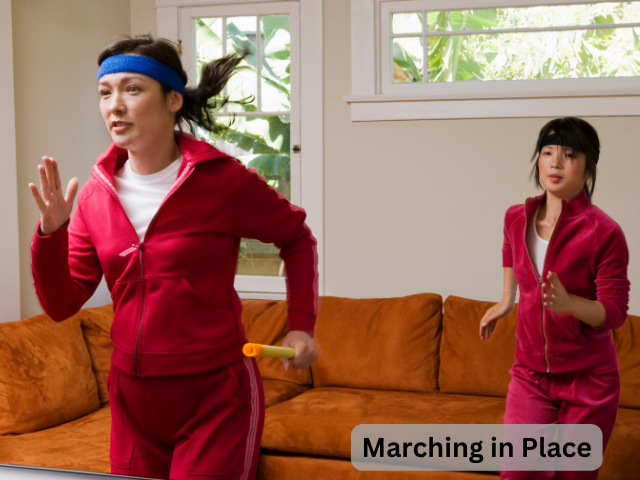
To perform the exercise:
- Simply march in place.
- Try to feel your hip muscles moving while marching.
Something simple as marching in place, involves your hip muscles. This is by far the safest and most rewarding low-impact exercise that helps engage the hip flexors.
Step-Ups
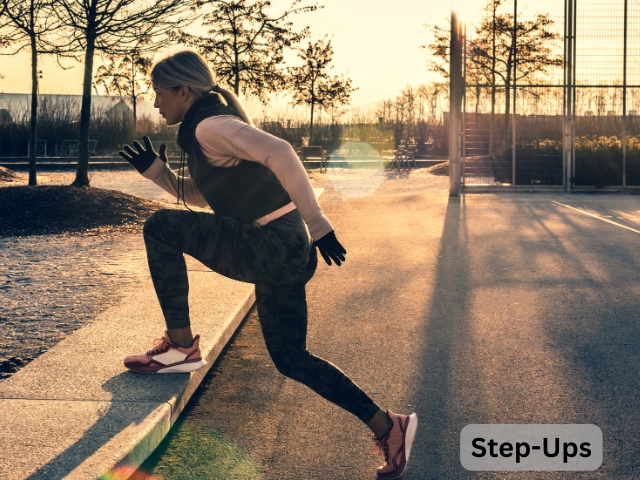
To perform the exercise:
- Find a low platform.
- Step up and down, try to engage your hip muscles.
This exercise can be modified to a higher-intensity workout by simply increasing the height of the platform.
Standing Leg Raise
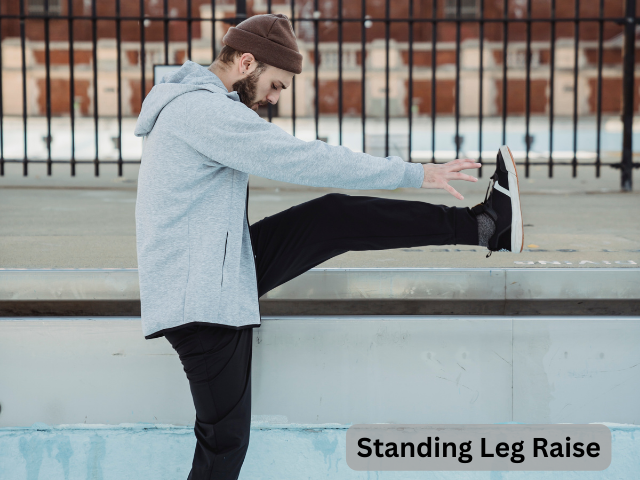
To perform the exercise:
- Stand with your feet hip-width apart.
- Lift one leg straight out in front of you, then lower it back down.
- Repeat on the other leg.
You can make this exercise easier by doing a seated leg lift instead.
Lateral Leg Raise
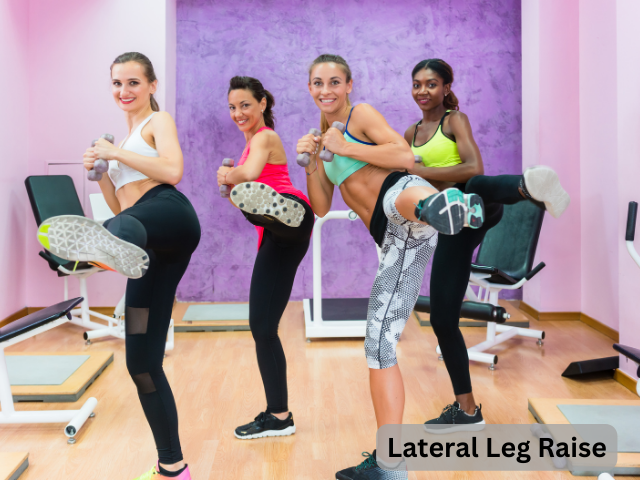
To perform the exercise:
- Stand with your feet hip-width apart.
- Lift one leg sideways away from your body.
- Lower the leg back down to the starting position.
- Repeat the same movement with the other leg.
It has a similar movement as standing leg raises, but you lift your leg to the side instead of the front.
Lateral Band Walks
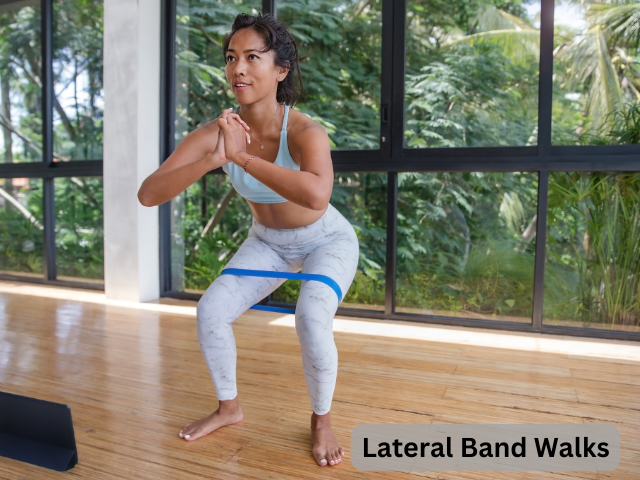
To perform the exercise:
- Place a resistance band around your ankles.
- Take lateral steps while maintaining tension on the band throughout the movement.
Lunges

To perform the exercise:
- Stand with your feet hip-width apart and take a step forward with one leg.
- Lower your body until both knees are bent at a 90-degree angle.
- Push off the front foot to return to the starting position. Repeat on the other leg.
Side Lunges
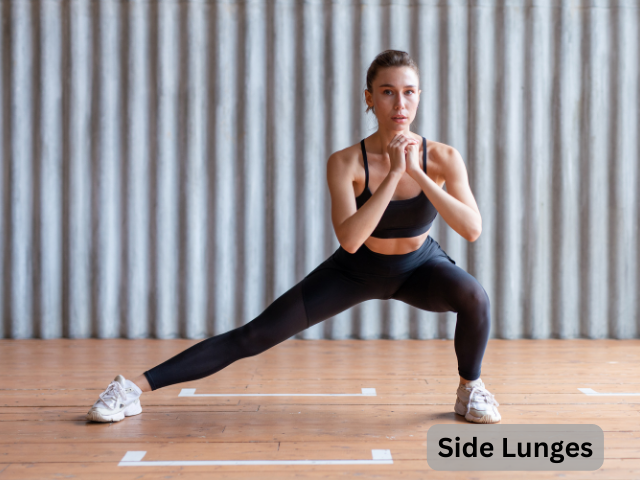
To perform the exercise:
- Stand with your feet together and take a step to the side with your right foot.
- Shift your body weight to the right, bending your knee while keeping the left leg straight.
- Push off the right foot to return to the starting position.
- Repeat on the other side.
As its name suggest, it has a similar movement as lunges, but instead of stepping to the front and/or back, you step to the side.
Leg Raises

To perform the exercise:
- Lie flat on your back.
- Lift your glutes off the ground into the air along with your legs without bending your knees.
- Lower your glutes and legs back down to the starting position.
- Repeat.
If you wish to raise the difficulty for this exercise, simply make the descent slower in a controlled manner.
Medium Intensity Hip Exercises
Greater intensity, but results in a much stronger overall stability. Perfect for preventing back or hip pain.
Bodyweight Squat
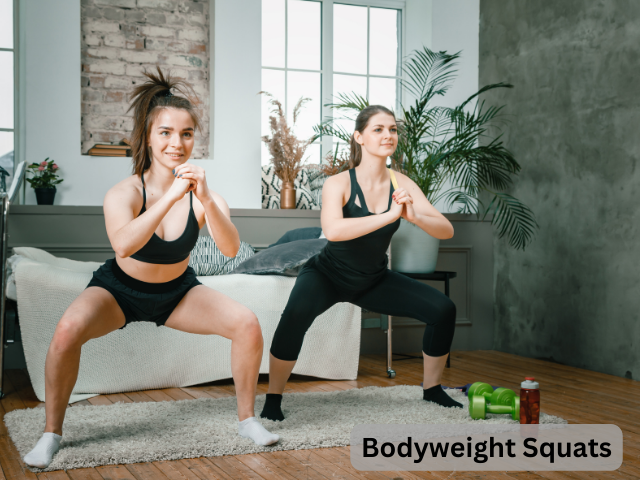
Depending on your bodyweight, this exercise can become a low-intensity to high-intensity exercise.
How to perform a bodyweight squat:
- Stand with your feet shoulder-width apart.
- Lower your body by bending your knees and pushing your hips back, as if sitting into a chair.
- Keep your chest up and back straight.
- Return to starting position by exploding back up.
Hip Bridges

To perform the exercise:
- Lie on your back with your knees bent and feet flat on the floor.
- Lift your hips toward the ceiling by squeezing your glutes.
- Hold for a moment at the top, then lower your hips back down.
Box Jumps

To perform the exercise:
- Stand in front of a sturdy box or platform.
- Jump onto the box, landing softly with your knees slightly bent.
- Step back down and repeat.
You can increase the height of the box or platform to increase the difficulty.
Kettlebell Swings
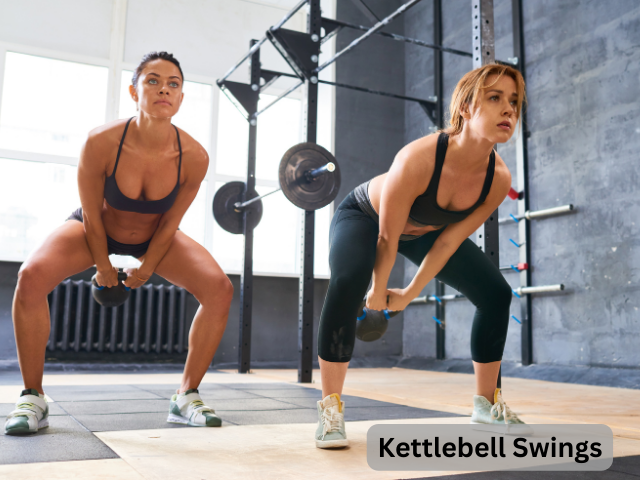
To perform the exercise:
- First, select a kettlebell that is neither too lightweight nor too heavy. If you are not sure, then do 1 rep of kettlebell swings to see if the weight is just right.
- Stand with your feet hip-width apart, holding a kettlebell with both hands.
- Hinge at your hips and swing the kettlebell between your legs.
- Thrust your hips forward to swing the kettlebell to chest height.
You can increase or decrease the weight of the kettlebell to change the difficulty of the exercise.
Mountain Climbers

To perform the exercise:
- Start in a plank position.
- Bring your right knee toward your chest, then switch legs in a running motion with a normal pace.
You can increase the difficulty by increasing the pace.
Bicycle Crunches
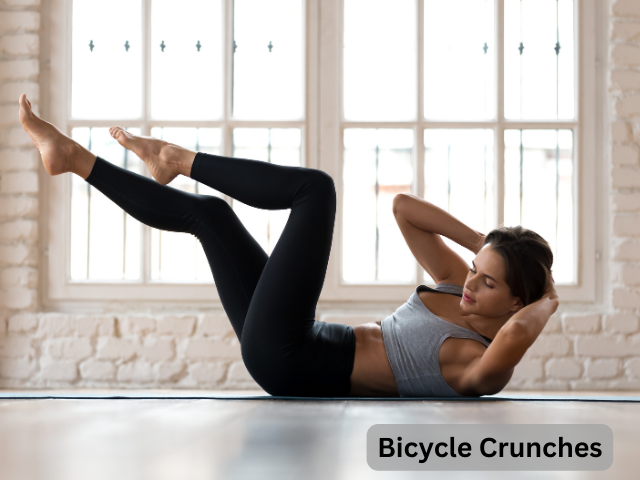
To perform the exercise:
- Lie on your back.
- Bring your knees up.
- Perform a bicycle pedaling motion while twisting your torso.
Medicine Ball Twists
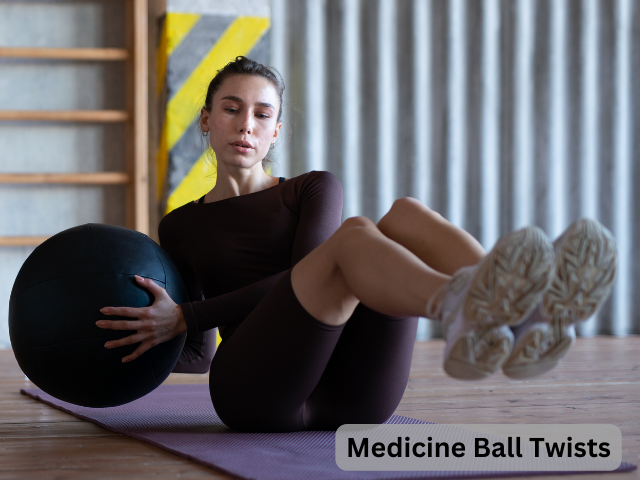
To perform the exercise:
- Sit on the floor with your knees bent, holding a medicine ball.
- Lean back slightly and twist your torso to touch the ball to the ground on each side.
Copyright ©2023, ©2024 by Marshall Vulta
Last revised: June 30, 2024




Comments ()